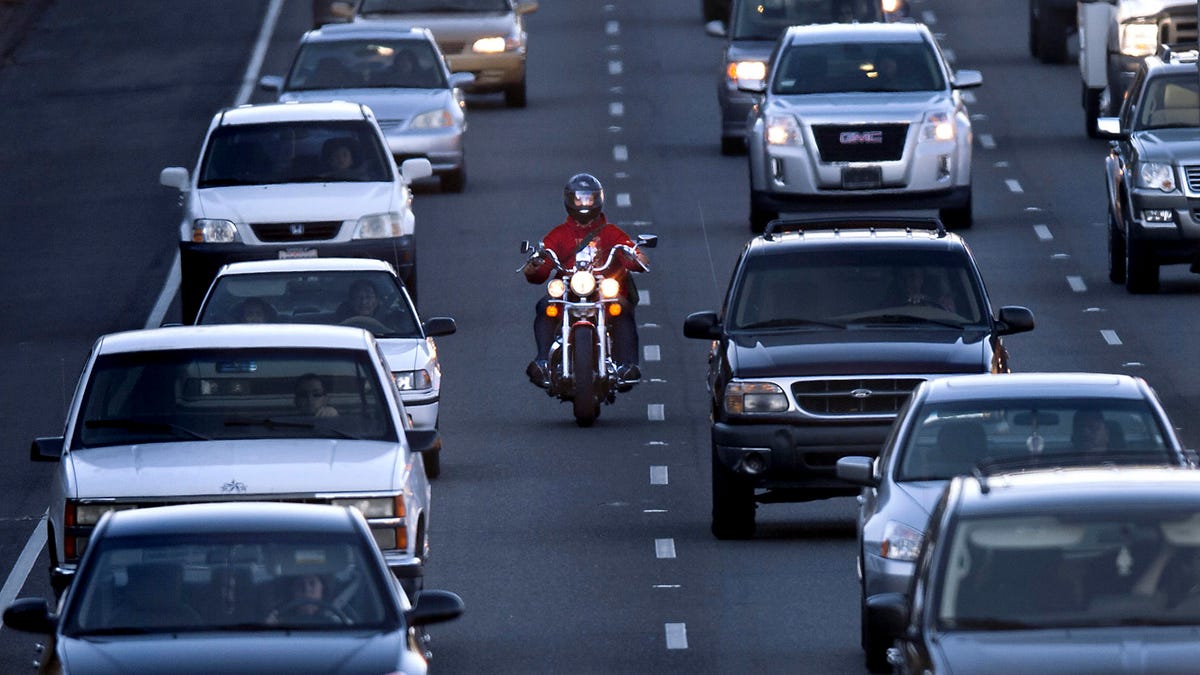Ford patents tech to detect lane-splitting motorcyclists
The patent outlines a system that uses cameras and a simple algorithm to detect motorcyclists approaching a vehicle from behind, between lanes.

Splitting lanes, or white-lining, lane sharing, filtering, etc., is a common practice all over the world, but outside of California, it's illegal in the US. So, for those of you who aren't familiar with it, it allows a motorcyclist to ride between rows of stopped or slowed vehicles on both surface roads and freeways.
When done sensibly, at low speeds, lane splitting is a reasonably safe practice but, sometimes motorcyclists are hard to see when coming up behind you between lanes, and if you decide to change lanes, there is a risk of a collision. To help mitigate that, there is a new patent filed by engineers from Ford that uses cameras and other sensors to help a vehicle detect lane-splitting motorcyclists and intervene where appropriate.
The system proposed by Ford would use rear-facing cameras to detect motorcyclists approaching from the rear in the inter-lane zone.
Motorcyclists can be difficult to see even under the best circumstances, and if your car has less than ideal visibility, that problem compounds. Ford's patent would use a trio of rear-facing cameras linked to a controller that ties in with a vehicle's other advanced driver assistance (ADAS) features to trigger automatic steering or braking when a motorcycle is detected in the inter-lane region.
This technology is great for cars with drivers, but it is critical for future driverless vehicles. Currently, most self-driving car platforms in testing still have difficulty detecting motorcyclists in traffic which, means that a self-driving car initiating a sudden, autonomous lane change could have real -- even deadly -- consequences for riders. If Ford fully develops its patent, it could mean a big leap forward for autonomous four-wheeled vehicle and two-wheeled vehicle relations, particularly if lane splitting becomes more widespread.
We always like to finish these patent pieces by reminding our readers that just because a company files a patent, it doesn't mean that it will go on to develop that patent into a product or service. Frequently, manufacturers will patent something merely to prevent its competitors from developing something similar, though we hope that's not the case here.

